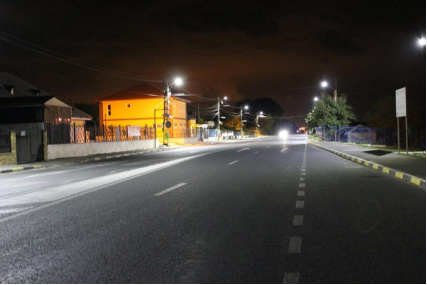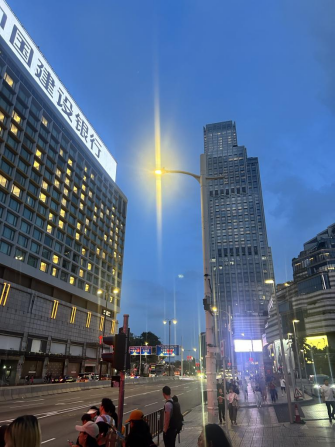Sansi LED: Sustainable LED Lighting and Integrated LED Display
Delivering premium and professional LED Display, LED Lighting, Smart City Integration solutions, trusted by over 60,000 companies worldwide everyday. From industrial lighting to commercial lighting, from outdoor advertising to XR & VR production, Sansi LED greatly improves the quality and sustainability of your business with 30 years of expert experiences.
In recent years, LED street lights have emerged as a prominent choice for public lighting due to their energy efficiency, environmental benefits, and extended lifespan. However, the performance and reliability of these fixtures largely depend on their power supply design. This blog will discuss key considerations in the design of power supplies for LED street lights.

Selecting the Right Power Supply Type
There are two main types of power supplies commonly used for LED street lights: Switching Power Supplies (SMPS) and Linear Power Supplies.
Switching Power Supplies (SMPS)
Switching power supplies are known for their high efficiency, compact size, and lightweight design. They are ideally suited for most LED applications, particularly when converting AC to DC power. Their ability to handle varying loads makes them the preferred choice in street lighting systems where reliability is crucial.
Linear Power Supplies
On the other hand, linear power supplies feature a simpler structure but tend to operate with lower efficiency. They are generally employed in low-power applications where their straightforward design can be advantageous.
When selecting the appropriate power supply type, considerations such as the power requirements of the LED street lights, environmental factors, and cost should be taken into account. For instance, in high humidity or extreme temperature conditions, the advantages of SMPS become more pronounced due to their superior thermal management capabilities.
Input Voltage Design
The power supply for LED street lights must be designed to accommodate variations in input voltage from the electrical grid. A wide input voltage range is essential to adapt to the fluctuations that may occur based on regional electrical standards. The typical AC voltage standard ranges from 100-240V, and the design should encompass this range to ensure that LED street lights operate under various conditions without damage from overvoltage or undervoltage scenarios.
Output Voltage and Current Design
To ensure stable operation, the power supply must provide the correct output voltage and current for the LEDs. Generally, the rated voltage for LED fixtures falls between 2V and 3V, depending on the type of LED and the number of components in series. It’s crucial that the power supply is precisely designed to match the maximum and minimum current ratings, preventing currents from exceeding the maximum allowable limits for the LEDs to avoid damage. Considerations for LED light degradation and temperature fluctuations are also critical to achieving consistent light output.

Efficiency and Thermal Management
Efficiency and thermal management are pivotal aspects of power supply design for LED street lights. A highly efficient power supply can significantly minimize energy loss and reduce operating costs. Ideally, switching power supplies should aim for efficiencies above 95%. Additionally, power supplies generate heat during operation; therefore, efficient thermal management systems must be implemented to maintain optimal temperature ranges. Common thermal management strategies include using high thermal conductivity materials, designing for airflow, and implementing heat sinks.
Protective Features in Power Supply Design
LED street lights’ power supplies must be equipped with robust protection features to withstand extreme weather conditions. This includes waterproof and dustproof capabilities, ideally meeting IP65 or higher protection ratings. Incorporating features that safeguard against overvoltage, overcurrent, and short circuits can significantly enhance the reliability and safety of the power supply.
Integration with Control Systems
As cities increasingly adopt smart technologies, the integration of control systems with LED street light power supplies is becoming more important. This integration allows for intelligent dimming, remote monitoring, and management functionalities. Smart control systems can automatically adjust the brightness of street lights based on real-time data from traffic conditions and weather patterns, enhancing energy efficiency and prolonging the lifespan of the fixtures.
